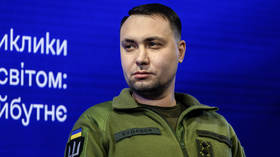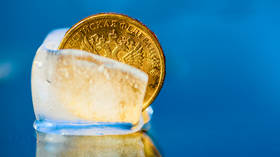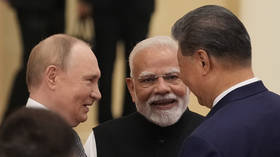Russians on the rebound as trampolining bounces back
It is a favorite birthday party activity and an Olympic sport as well. The latter might well be the reason for trampolining's jump in popularity in Russia.
The modern trampoline was invented by George Nissen and Larry Griswold in 1936 in the US, though it had a long wait until the first world championship was held in 1963.Back then, the Soviet Union dominated the sport, with only a handful of other countries considered to be contenders.However, once trampolining finally received recognition as an Olympic discipline at the Sydney Games in 2000, everything changed. “One of the former US presidents said that the power of a country is measured in its number of nuclear warheads and the number of its Olympic champions. Trampolining wasn't popular when it didn't have an Olympic status. And the Soviet Union was competing against few opponents. However when it was included in the Olympic Games, the number of competitors increased dramatically, and China is conquering them all,” Russian trampolining coach Aleksey Rozhkov explained. The southern city of Krasnodar is the capital of trampolining in Russia, with long-held traditions of producing world and Olympic champions. One such is the first-ever women's Olympic champion – and the most decorated athlete in the sport – Irina Karavaeva.And the 36-year-old athlete retains the kind of Olympic spirit that saw her given the International Fair Play Award in 2001.“At the World Championship in Denmark, a judge made a serious mistake and I won the gold medal. But I just couldn't accept that, and I just had to give the medal to my opponent because it was unfair and I didn't deserve it,” she said. However, the versatile trampoline’s uses are not restricted to sporting competitions: the first Soviet cosmonauts, Yury Gagarin and Valentina Tereshkova, trained on it and it is also used in cross-training for many other sports.“Many people start trampolining as it provides a foundation for other sports like gymnastics, diving, freestyle skiing, snowboarding and other extreme sports. In Russia, many gyms now have trampolines, and the popularity of it is growing,” Irina Karavaeva said. “The sport is complicated in the coordination of movements. Footballers and hockey players also use it in training. For example, many footballers perform cartwheels and somersaults after scoring goals – and they practice those tricks on a trampoline. And many other sports use trampolines. The decision speed for jumpers is as high as that of Formula 1 drivers,” Aleksey Rozhkov explained. Trampolining’s soaring popularity has seen it working its way into fitness clubs and gyms. It is becoming more affordable, and it is a great way of keeping in shape as eight minutes of jumping brings the same benefits as a three-kilometer run.












